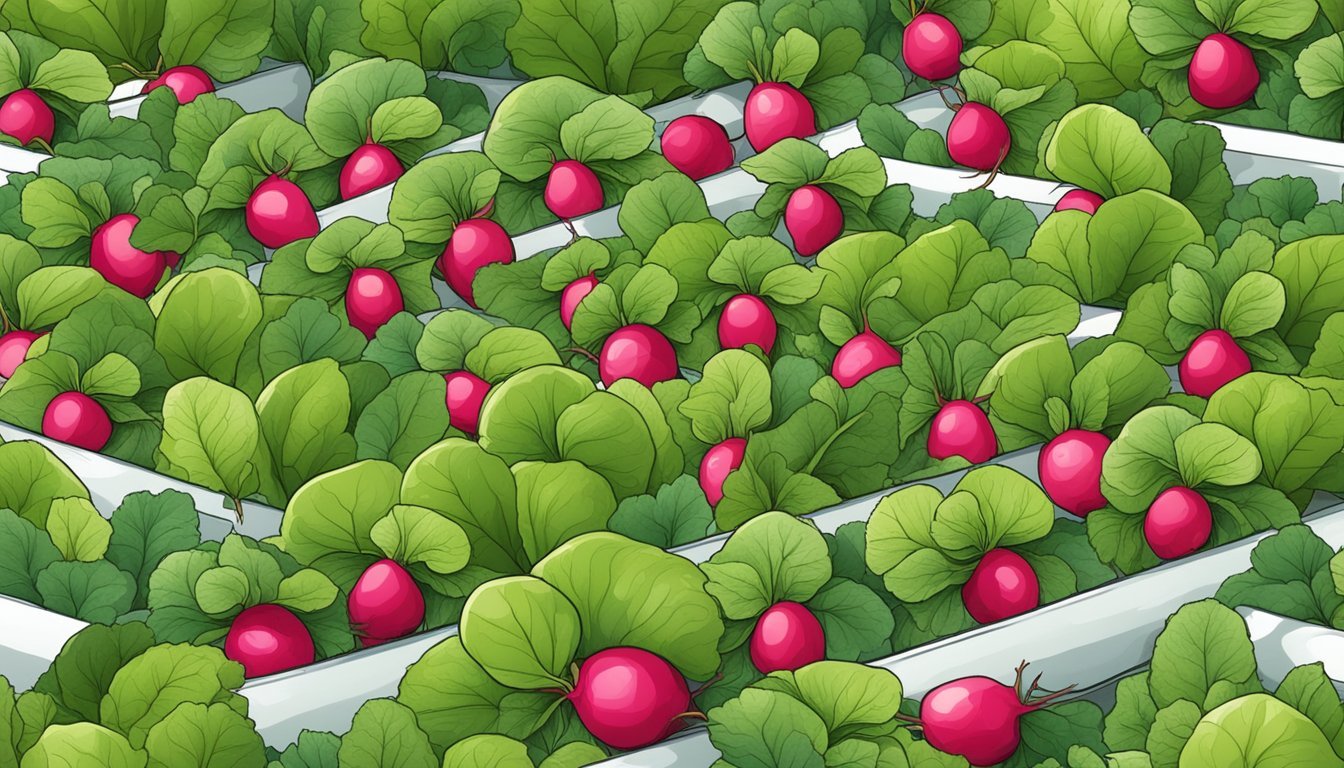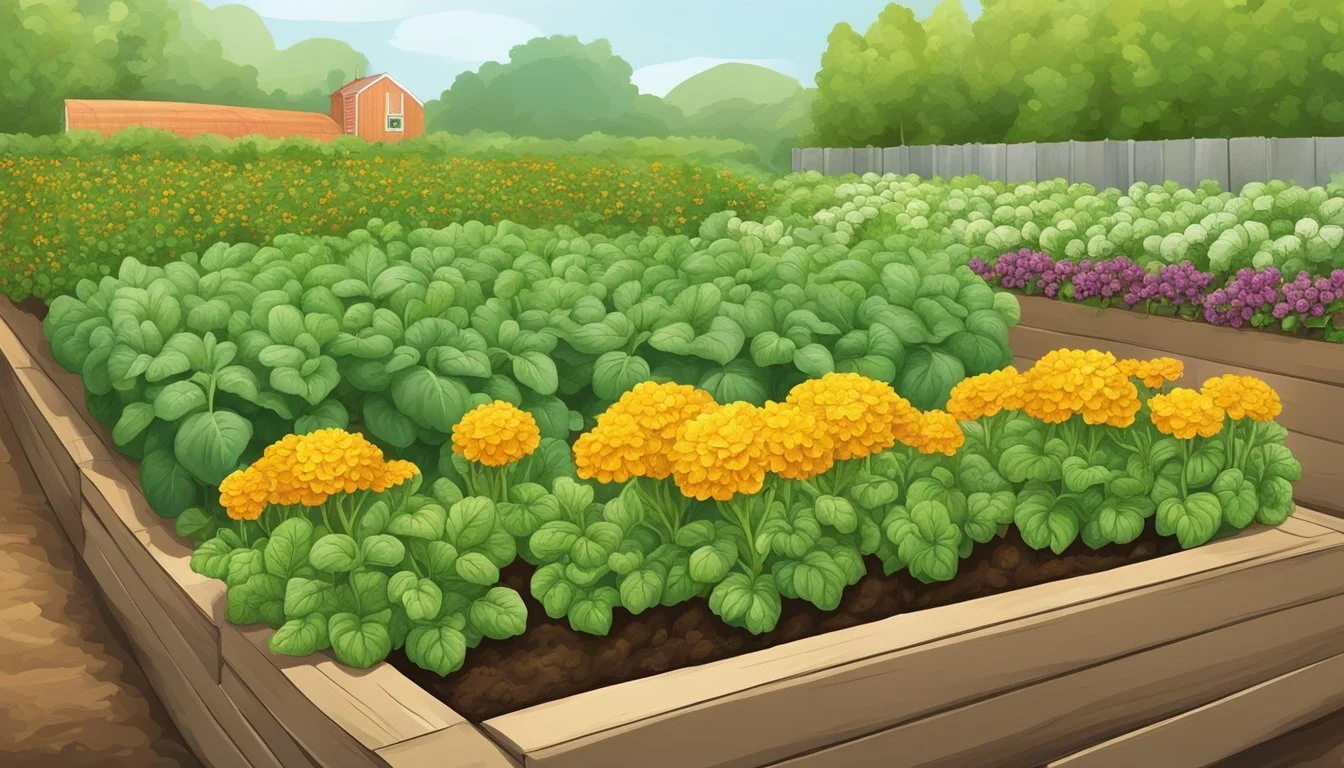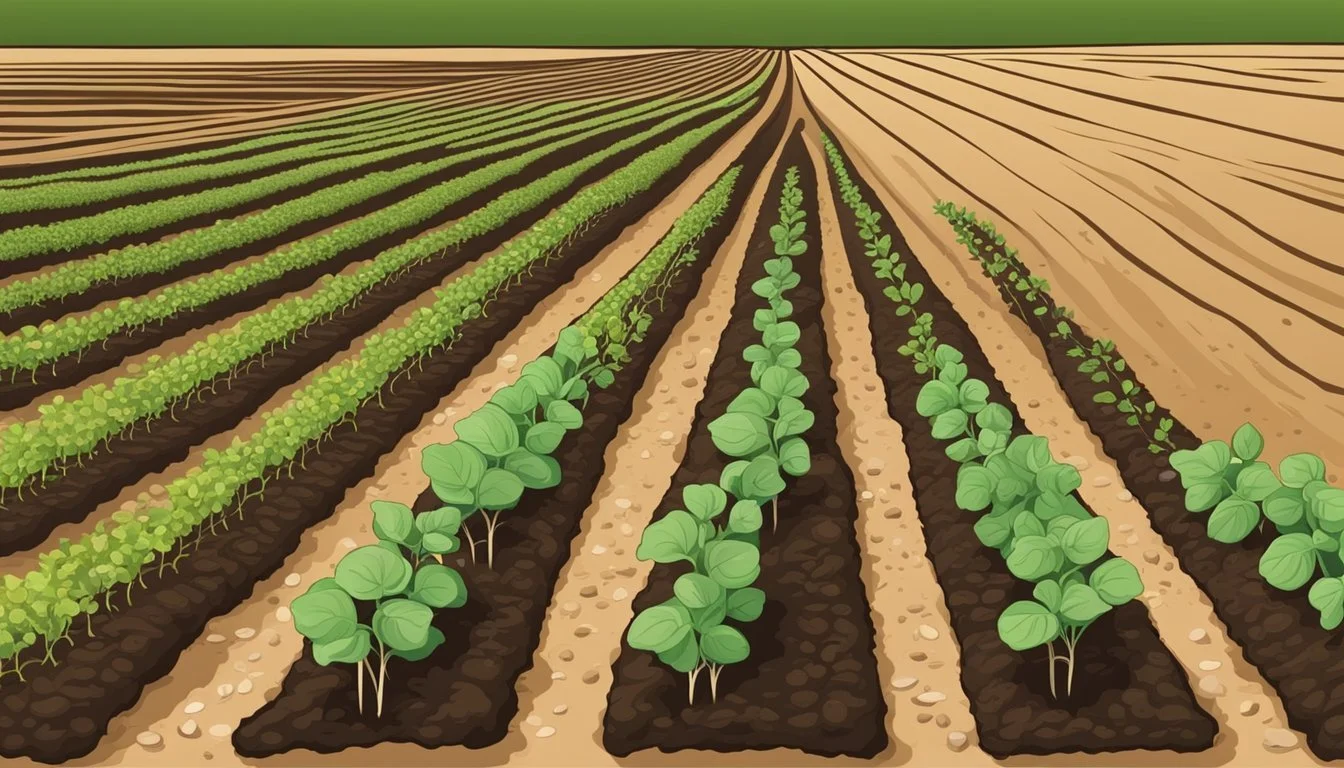Pest Control for Radishes
Effective Strategies for Healthy Crops
Gardeners often find that growing radishes can come with its share of challenges, particularly from pests. Radishes, a popular root vegetable known for their fast growth and peppery flavor, are susceptible to various insects that can hinder their development and reduce crop yield. Effective pest control is crucial for ensuring healthy radish growth. Gardeners must be vigilant in identifying the types of pests that are attracted to radishes and the damage they cause.
Implementing integrated pest management techniques is essential for controlling the pesky intruders that target these plants. Cultural controls, such as crop rotation and maintaining a clean garden bed, are fundamental steps in reducing the likelihood of infestations. In addition, understanding which bugs commonly eat radishes can inform which preventive measures and treatments to apply. Combating radish pests successfully means identifying the problem early and choosing appropriate, targeted solutions to keep the garden thriving.
Radish Cultivation Basics
Radish plants are a popular choice for gardeners due to their rapid growth and ease of care. For successful cultivation, adhering to several basic guidelines is key.
Planting: Sowing radish seeds should be done directly in the garden bed. They are best planted about ½ inch deep and spaced approximately 1 inch apart. It's advisable to cultivate the seeds in rows, maintaining a distance of about 12 inches between each row for proper air circulation.
Soil: The ideal soil for radishes should be well-draining and rich in organic matter. The soil should be loose and free of debris and stones to allow unimpeded growth. The pH level of the soil should ideally fall between 5.8 and 6.8.
Optimal Conditions Specifications Optimal Temperature 10-18°C (50-65°F) Growing Season Cool and moist Sunlight Requirements Full sun to part shade Soil Texture Well-draining, sandy loam Soil pH 5.8 to 6.8
For the growing season, radishes flourish best in cooler weather. Hence, they are typically planted in the spring or fall. They can mature and be ready to harvest in as short as 30 to 50 days from sowing.
Finally, the plants require consistent moisture, yet overwatering should be avoided to prevent root rot. Adequate sunlight is critical, with radishes thriving in full sun but also tolerating part shade. Conditions that strike the right balance between sunlight exposure and cool temperatures can lead to an abundant radish harvest.
Soil Preparation and Plant Care
Radishes thrive in well-prepared soil and with proper care throughout their growth cycle. Tailoring the growing conditions to their specific needs can lead to a bountiful harvest of crisp, flavorful radishes.
Soil PH and Nutrients
Radishes prefer a soil pH between 6.0 and 7.0. It's important to test the soil before planting and adjust accordingly. A balanced mix of nutrients is vital, but avoid excessive nitrogen fertilizer, as it can promote leafy growth at the expense of root development.
Watering and Drainage
Consistent watering is essential, as radishes require soil that is moist but not waterlogged. Improve drainage by working organic matter into the soil, ensuring roots receive adequate water without the risk of rot or fungal diseases.
Sowing and Spacing
Radish seeds should be sown directly into the soil, a half-inch deep. Plant seeds about 1 inch apart in rows 3 inches apart. As the seedlings grow, thin them to prevent overcrowding, which can impact the size and quality of the radish roots.
Preventive Measures for Plant Health
Encourage good air circulation around the plants by not overcrowding them. Use row covers to protect seedlings from pests and excessive cold. Regularly remove weed and debris to minimize the risk of pests and diseases.
Identifying and Managing Fungal Diseases
Be vigilant for signs of fungal diseases such as downy mildew, blight, fusarium wilt, and clubroot. Implement preventative measures like proper spacing and crop rotation, and treat affected plants or soil as needed to control these problems.
Companion Planting and Crop Rotation
Utilize companion plants like mustard, sunflowers, and stinging nettles to deter pests. Rotate crops, especially with brassicas, to prevent disease build-up and pest populations from becoming established.
Optimizing Growth Conditions
Radishes are easy to grow, but they do best in conditions that reflect their needs. They prefer part shade in hotter climates to prevent bolting. Ensure that the soil does not dry out, and mulch to maintain even soil temperatures.
Harvesting Techniques
Harvest radishes by gently pulling them from the soil when they reach full size. This is typically the size of a large marble but can vary with different varieties. Do not leave radishes in the ground too long, as they can become woody and pungent.
Post-Harvest Management
After harvest, remove the radish stems, leaves, and flowers. Clean them thoroughly and allow to dry out before storing. Radishes can be stored in a refrigerator or a cool, dry place to maintain their freshness for consumption.
Pest Identification and Control Strategies
Effective management of radish pests involves precise identification followed by targeted control measures. Employing a multifaceted approach can significantly reduce pest populations and minimize crop damage.
Common Radish Pests
Radishes may fall victim to a variety of insect pests including aphids, flea beetles, cutworms, and root maggots. Cabbage loopers and harlequin bugs also pose a threat, as they can severely damage both the leaves and the roots of radish plants.
Aphids: Small, sap-sucking insects that can spread diseases.
Flea Beetles: They chew small holes in the leaves, reducing photosynthesis.
Cutworms: Larvae that cut off seedlings at the soil surface.
Root Maggots: The larvae feed on the radish roots, causing wilting.
Biological Pest Control Methods
Utilization of beneficial insects, such as lacewings and ladybugs, can control aphid populations effectively. These predators naturally keep pest levels in check without harming the radish plants. Additionally, neem oil can act as both an insecticide and a deterrent for certain pests.
Lacewings: Predators that feed on aphids and other soft-bodied pests.
Ladybugs: Known to consume large quantities of aphids, helping prevent outbreaks.
Physical Pest Control Measures
Applying floating fabric row covers can safeguard radishes from the majority of insect pests by acting as a physical barrier. Collars or plastic cups placed around seedlings can protect them from cutworms. Regularly removing debris from the garden area also lessens habitats for slugs and snails.
Row Covers: Barrier to prevent insects from reaching plants.
Collars: Protect young seedlings from being cut down by cutworms.
Chemical Control and Organic Pesticides
When necessary, gardeners might resort to pesticides for immediate pest suppression. However, in an organic garden, alternatives like neem oil, garlic, and mint extracts serve as organic pesticides which are less harmful to the environment.
Neem Oil: Organic insecticide that also acts against certain fungal diseases.
Garlic/Mint: Natural repellents that can disrupt insect feeding patterns and lifecycle.
Integrated Pest Management Practices
Adopting Integrated Pest Management (IPM) practices involves strategically combining various methods to control pests with minimal ecological impact. This includes routine monitoring, crop rotation to prevent pest spread, and timing plantings to avoid peak pest presence.
Crop Rotation: Helps prevent soil-borne pathogens and disrupts pest life cycles.
Monitoring: Early detection leads to more successful and minimized interventions.
Troubleshooting Crop Issues
When cultivating radishes, growers may encounter a range of issues that can affect crop health and yield. Understanding how to diagnose and address nutrient imbalances, weather problems, diseases, and pest infestations is crucial for maintaining a healthy radish crop.
Nutrient Deficiencies and Soil Problems
Soil pH: Radishes thrive in a soil pH range of 6.5 to 7.0. Soil that is too acidic or too alkaline can result in nutrient deficiencies, causing poor growth and subpar root development.
Nitrogen Fertilizer: An excess can lead to lush foliage with underdeveloped roots, while a deficiency can cause stunted growth.
Weather-Related Challenges
Optimal Temperature: Radishes prefer cooler temperatures between 50°F and 70°F. High temperatures can make radish roots pungent and woody.
Full Sun: Radishes require full sun but can become stressed under excessive heat, necessitating mulching to maintain cooler soil temperatures.
Diseases and Pathogens
Disease Symptoms Prevention/Treatment Clubroot Swollen, deformed roots; yellowing of leaves Maintain soil pH around 7.0; practice crop rotation Black Root Yellowing leaves, brown curled leaf margins Destroy infected plants; avoid overhead watering Fusarium Wilt Wilt; off-colored sap Use disease-resistant varieties; improve soil drainage Powdery Mildew White powdery spots on leaves Enhance air circulation; apply fungicides if necessary
Fungal Diseases: Ensure good air circulation and soil drainage, and practice crop rotation to prevent pathogen buildup.
Pest Damage and Plant Response
Root Maggots: These pests can be identified by winding tunnels in the roots and weakened plants. Radish plants may produce green leaves that turn yellow when infested with root maggots. Applying appropriate insecticides and using floating row covers can prevent infestations.
Leaf Spot and Scab: Pests and diseases like these can cause foliage to spot or swell abnormally. Effective pest management, such as introducing beneficial insects, can reduce the likelihood of damage.
Frequently Asked Questions
In this section, readers will find direct answers to common concerns about protecting radish crops from pests and diseases.
How can I naturally deter pests from my radish plants?
One can naturally deter pests by using physical barriers like floating row covers and introducing beneficial insects like green lacewings that feed on harmful insects. Companion planting with plants that repel insects, such as marigolds, can also be effective.
What are the common insects that attack radish leaves?
Common insects that target radish leaves include aphids, flea beetles, and cabbage loopers. They can cause significant damage by chewing on the leaves and reducing the plant’s ability to photosynthesize.
How do I identify and treat radish root maggot infestations?
Radish root maggots can be recognized by wilting plants and tunneling damage to the roots. To manage an infestation, remove and destroy affected plants and practice crop rotation to prevent a recurring issue.
What measures can I take to prevent aphids from infesting my radishes?
Preventing aphids involves regularly inspecting plants and using a strong jet of water to dislodge them or applying neem oil as an organic treatment. Maintaining plant health through proper watering and fertilization also decreases aphid attraction.
What could be causing holes in my radish leaves, and how can I prevent it?
Holes in radish leaves are often caused by insects like flea beetles. Preventive approaches include using row covers to protect the plants, applying diatomaceous earth around the base of the plants, or attracting natural predators to the garden.
What are the best practices for protecting radishes from common diseases and pests?
The best practices for protecting radishes include rotating crops annually, maintaining a clean garden free of debris, ensuring proper spacing for air circulation, and consistent watering to promote healthy growth less vulnerable to pests and diseases.





